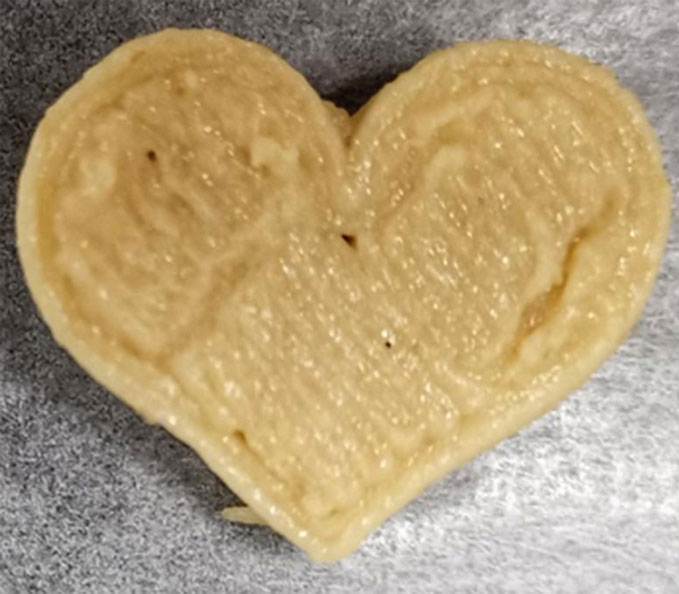Experts combine plant-based ingredients such as wheat and soy protein, cocoa butter, to create “meat powder” for 3D printers.
Animal meat alternatives are becoming increasingly popular worldwide. In a study published in the journal ACS Food Science & Technology, a team of experts at Zhejiang University has developed a new method to combine plant-based ingredients to create 3D-printed meat substitutes. The best formulation requires a unique additive: cocoa butter, extracted from cocoa beans used for chocolate, SciTechDaily reported on December 28.

3D-printed meat substitutes made from plant-based ingredients, including cocoa butter. (Photo: ACS Food Science & Technology)
There are numerous reasons why many people avoid eating animal meat, such as animal rights and environmental sustainability. Many current meat alternatives use plant-based proteins, typically derived from soy and wheat, which can mimic the texture and nutritional value of real meat.
Experts Songbai Liu and Shanshan Wang at Zhejiang University aimed to create a type of “meat powder” with soy and wheat protein that can be effectively produced using a 3D printer. They experimented with formulations containing wheat protein, soy protein, and several other ingredients with a 3D printer, evaluating them based on accuracy and shape retention during the printing process. They also examined the texture and microstructure of the products.
Tests highlighted the importance of certain additives, such as the emulsifier Tween-80 and sodium alginate, to control texture. Cocoa butter, which is heat-sensitive, is a particularly crucial ingredient, making the powder more pliable at warm temperatures for printing, then hardening at room temperature, allowing the powder to maintain its shape during printing.
A limitation is that individuals allergic to wheat gluten or soy will not be able to consume this new meat alternative. To address this issue, scientists attempted to replace soy protein with pea protein, but the result was a powder that was too soft and unsuitable for printing. Nevertheless, the experiments have paved a new path for formulating meat substitute products, according to the research team.


















































